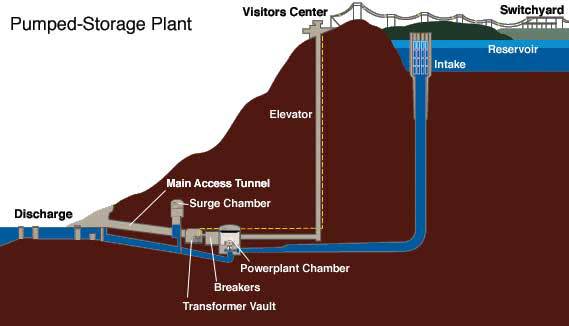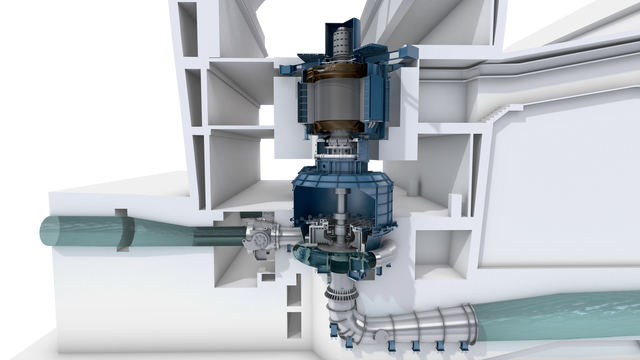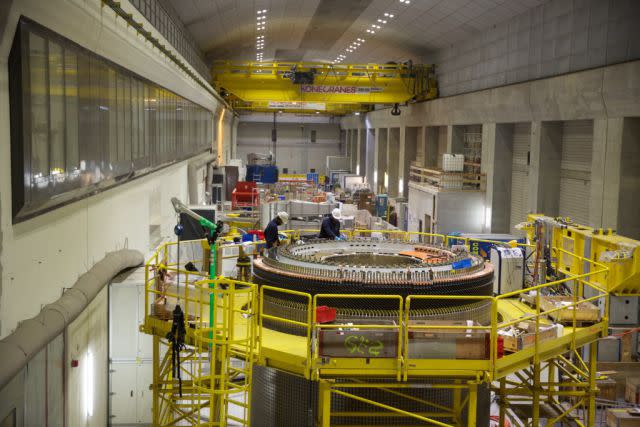The Swiss have upgraded a hydroelectric dam to produce as much energy as a nuclear power plant

We need batteries that can power millions of homes, deliver excellent efficiency, and cost little to operate. It turns out we’ve had the technology since 1890. We just need to build a lot more of them.
They’re called pumped water storage, and the technology is the world’s largest energy storage system, representing 98% of installed storage capacity worldwide. First deployed in the 1890s in the Swiss and Austrian Alps, pumped water storage is essentially two large reservoirs of water at different elevations. Water is pumped uphill when electricity is cheap and plentiful, and runs downhill, spinning turbines and generating electricity, when needed.

Compared to chemical batteries, flywheels, compressed air, and more esoteric technologies, pumped water storage is larger, infinitely rechargeable and highly efficient (80% or more in most cases). It’s also poised to become the go-to solution for many electrical grids that are embracing renewable energy at an unprecedented rate: 147 gigawatts of renewable power capacity was added in 2015, the most ever built in a single year.
Last week, GE announced it was retrofitting a hydroelectric plant in Switzerland with variable-speed turbines to give Europe’s grid far better storage capacity for its renewable sources. The Linthal plant is among the most extreme of the pumped storage makeovers happening around the world. It’s perched 2,490 meters (8,100 feet) above sea level between two mountain lakes separated by a cliff twice the height of the Eiffel Tower. At full capacity of 23 billion gallons, the plant can generate about 1,450 megawatts of electricity, the equivalent of a nuclear plant. GE swapped out its conventional turbines for variable-speed models that will store and generate far more power.
GE says the technology in plants like Linthal is the future. Of the 270 or so pumped water storage sites around the world in 2013, only about 17 employed variable speed turbines, reports the National Hydropower Association (pdf). The market for such storage is set to “explode.” Energy consultancy IHS predicts power water storage will see annual increase of 6 gigawatts (GW) next year to over 40 GW per year by 2022 (compared to a total installed base of just 0.34 GW in 2012-2013). Greater grid connectivity and other battery technologies could alleviate some of this need, report German researchers, but that demand would translate into dozens of new storage facilities.
While variable-speed turbines aren’t cheap to build (or retrofit), the efficiency gains outweigh the costs because they offer a key feature that turns pumped storage into a much better battery: precise control over the amount of electricity consumed and generated.

Until recently, plant operators needed to store or harvest energy in “blocks,” or set amounts of energy, determined by the capacity of the pumps and turbines. If grid operators needed to store 14 megawatts (MW) of excess capacity, but the water pumps operated in blocks of 10 MW each, then 4 MW would be wasted. Variable-speed turbines let grid operators finely tune the amount of energy drawn or returned to the grid.

This precision is crucial as variable energy sources such as wind, solar, and others begin to dominate electrical grids around the world. Countries ramping up their renewable energy product must choose between running more “peaker” plants (usually powered by fossil fuels such as natural gas) to take up the slack—or store more energy to smooth out grids’ peaks and valleys.

Pumped water appears to be the more economical option where the topography permits. GE and Hitachi say they are equipping pumped water storage sites around the world with variable speed turbines (GE says it has 3,000 MW of such projects underway). New ones, such as an artificial atoll in the North Sea, are under consideration. Norway is building two undersea cables from UK and Germany to store Europe’s surplus energy in its high mountain lakes. The cables are scheduled to start operating by 2020.


Sign up for the Quartz Daily Brief, our free daily newsletter with the world’s most important and interesting news.
More stories from Quartz:
